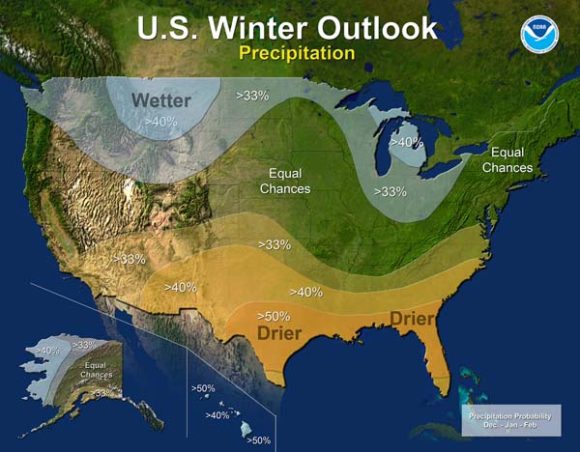

Forecasters at the U.S. Climate Prediction Center issued their U.S. winter outlook today, saying that La Nina is expected to influence winter conditions this year. La Nina favors drier, warmer winters in the southern U.S and wetter, cooler conditions in the northern U.S.
The Climate Prediction Center, run by the National Oceanic and Atmospheric Administration NOAA), has predicted that the La Nina climate phenomenon is likely to develop in late fall or early winter. If La Nina conditions materialize, forecasters say they should be weak and potentially short-lived.
“This climate outlook provides the most likely outcome for the upcoming winter season, but it also provides the public with a good reminder that winter is just up ahead and it’s a good time to prepare for typical winter hazards, such as extreme cold and snowstorms,” said Mike Halpert, deputy director, Climate Prediction Center.
NOAA notes that other factors often play a role in the winter weather including the Arctic Oscillation, which influences the number of arctic air masses that penetrate into the South and create nor’easters on the East Coast, and the Madden-Julian Oscillation, which can affect the number of heavy rain events in the Pacific Northwest.

Here is NOAA’s official 2016 winter outlook for December, 2016 through February, 2017:
Precipitation:
Temperature:
According to NOAA, its seasonal outlook does not project where and when snowstorms may hit or provide total seasonal snowfall accumulations. Snow forecasts are dependent upon the strength and track of winter storms, which are generally not predictable more than a week in advance. However, La Nina winters tend to favor above average snowfall around the Great Lakes and in the northern Rockies and below average snowfall in the mid-Atlantic.
Source: NOAA
Related: